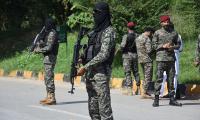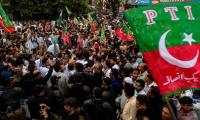Guam doesn’t feel like a target. When I have visited the island over the course of the past several decades, it has struck me as one of the most wildly beautiful places on earth, with an endless turquoise sea, dramatic limestone cliffs, and impossibly green hills, and one of the most welcoming. It residents’ contemporary Chamorro cultural values emphasise family, generosity, non-confrontation, and respect for one’s elders, neighbours, and guests. But a target it is and was: today, of North Korea, in years past of the Soviet Union (the joke had it that no outsiders save the nuclear targeters in Moscow knew where Guam was), and in World War II, of invasion and abuse from Japan.
Each of these three nations’ leaders saw Guam with its US military presence – so far from the US, so close to them – as a danger and a provocation. Most news accounts of the last week note that Guam became a target of North Korea because it is loaded with US military personnel and equipment: Airmen and sailors, B-2 stealth bombers, fast attack submarines, advanced radar systems, and weapons depots that together can deliver enough explosive power, including nuclear weapons, to destroy every Asian city within thousands of miles.
Yet the Chamorro people who are the original inhabitants of these islands did not choose to become a target. They did not elect to be war booty, handed from Spain at the close of the Spanish-American War in 1898. They did not vote to give one-third of their land mass to the US military for military bases, and they did not opt, as a result of the mass in-migration of base workers and US veterans, to become a minority in their own homeland. Even if many citizens of Guam have chosen to find employment or prove their mettle or pride by putting on a US military uniform, they did not choose to become the launching pad for innumerable bombing runs over Vietnam or a conduit for military force to be applied in many elsewheres.
It is not clear what would have happened in the late 1940s if the US had followed the UN Charter’s requirement for decolonisation, a process then beginning everywhere around the world. To follow that US-supported charter would have required a vote on whether Guam, like all colonies, was to become an independent nation. Instead the US, fearing loss of a military asset, unilaterally made the people of Guam US citizens, even if second class, unable to vote for President or have voting representation in Congress.
What the United States government has since promised the people of Guam in return is protection, but the protection it needs, it turns out, is from threats that the US itself has generated by its massive militarization of the island. At the same time, it has failed to protect Guam’s well-being as it should have, leaving a toxic legacy of buried mustard gas canisters from World War II, jet-fuel contaminated water supplies, and a Super Fund site with few rivals in scale.
Some on Guam focus less on history than on the reality of a US military presence that is not going to end anytime soon or on the symbolic benefits of being considered even a very junior member of the American family or of being the place “where America’s day begins,” as their license plates say. Many on Guam are less concerned about the background noise, yet again, of the saber-rattlers. They are instead focused on what they can do to prevent further military buildup, further provocation, and further losses: a planned move to Guam of thousands of US Marines from Okinawa – where they have worn out their welcome in a sovereign Japan – has generated anger, mobilization, and lawsuits. The US Navy has targeted a large area at the northern end of the island for a set of expansive firing ranges and is days away from destroying a thousand acres of pristine forest, several endangered species, and sacred historical sites, and will close public beaches and the fishing waters beyond the ranges while the ranges are in use. New soldiers and new facilities will threaten the already strained drinking water supply.
In a recent ‘Open Letter from Guam to America’, resident Victoria-Lola Leon Guerrero writes to a country that only now hears about Guam’s existence. She explains how her children hide under the playground slide as US B-2 bombers fly overhead, but how she otherwise lives in a land she loves, growing her own food, and living “the life my ancestors wanted for me and for them.” And she asks President Trump and those who think like him about projecting power without really knowing what that means, on the backs of others, “to stop his bomb talk, and instead, ask yourself why Guam is still your colony in 2017”.
This article has been excerpted from: ‘How Did Guam Become a Target of North Korea Missiles?’
Courtesy: Commondreams.org
Data, today, defines how we make decisions with tools allowing us to analyse experience more precisely
But if history has shown us anything, it is that rivals can eventually unite when stakes are high enough
Imagine a classroom where students are encouraged to question, and think deeply
Pakistan’s wheat farmers face unusually large pitfalls highlighting root cause of downward slide in agriculture
In agriculture, Pakistan moved up from 48th rank in year 2000 to an impressive ranking of 15th by year 2023
Born in Allahabad in 1943, Saeeda Gazdar migrated to Pakistan after Partition







